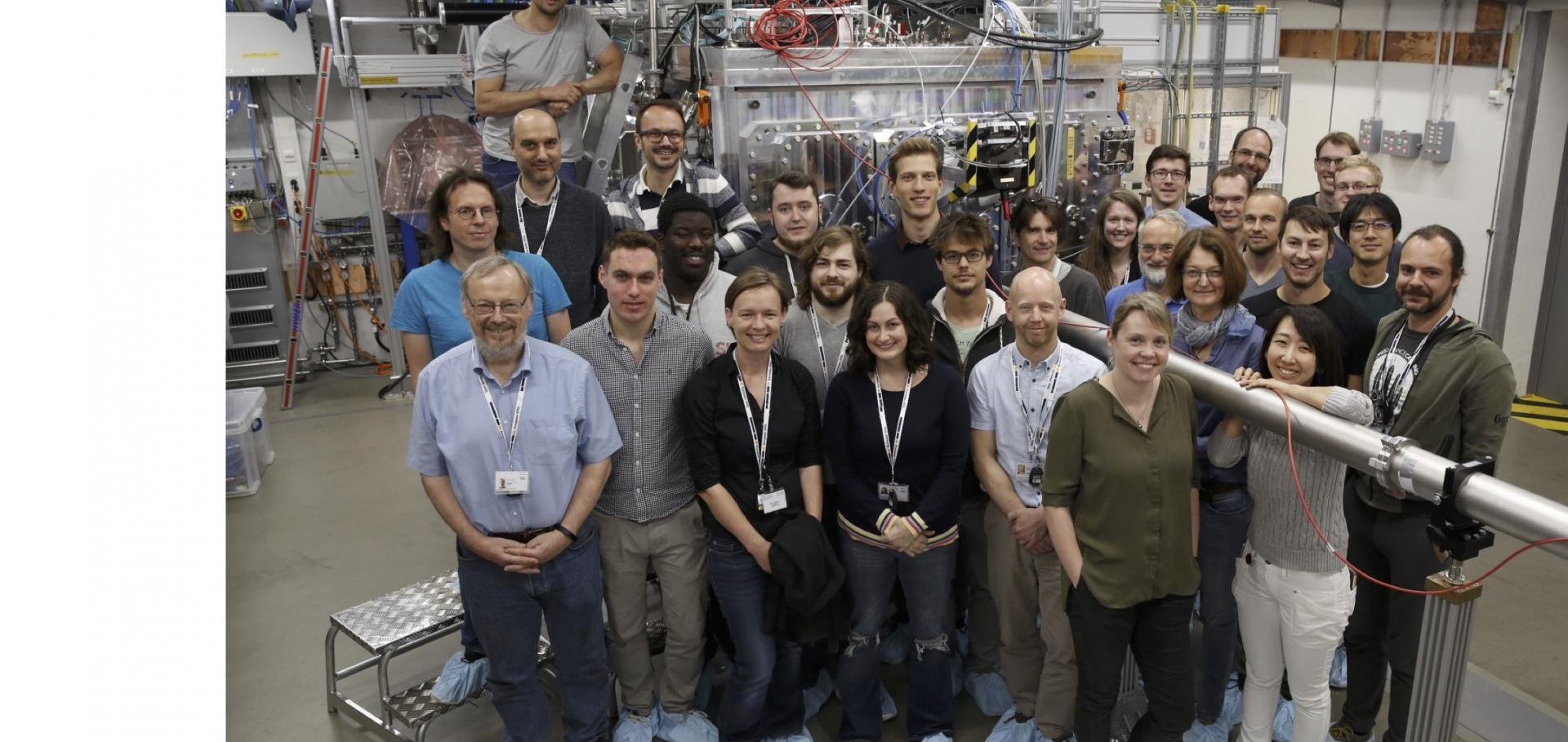X-ray thermal diffuse scattering as a texture-robust temperature diagnostic for dynamically compressed solids
Journal of Applied Physics AIP Publishing 138:15 (2025) 155903
Abstract:
We present a model of x-ray thermal diffuse scattering (TDS) from a cubic polycrystal with an arbitrary crystallographic texture, based on the classic approach of Warren [B. E. Warren, Acta Crystallogr. 6, 803 (1953)]. We compare the predictions of our model with femtosecond x-ray diffraction patterns gathered from ambient and dynamically compressed rolled copper foils obtained at the High Energy Density instrument of the European X-Ray Free-Electron Laser facility and find that the texture-aware TDS model yields more accurate results than does the conventional powder model owed to Warren. Nevertheless, we further show: with sufficient angular detector coverage, the TDS signal is largely unchanged by sample orientation and in all cases strongly resembles the signal from a perfectly random powder; shot-to-shot fluctuations in the TDS signal resulting from grain-sampling statistics are at the percent level, in stark contrast to the fluctuations in the Bragg-peak intensities (which are over an order of magnitude greater); and TDS is largely unchanged even following texture evolution caused by compression-induced plastic deformation. We conclude that TDS is robust against texture variation, making it a flexible temperature diagnostic applicable just as well to off-the-shelf commercial foils as to ideal powders.Search for heavy axions with the European X-Ray Free Electron Laser
Proceedings of 39th International Cosmic Ray Conference — PoS(ICRC2025) Sissa Medialab (2025) 524-524
High-quality ultra-fast total scattering and pair distribution function data using an X-ray free-electron laser.
IUCrJ International Union of Crystallography (IUCr) 12:5 (2025)
Abstract:
High-quality total scattering data, a key tool for understanding atomic-scale structure in disordered materials, require stable instrumentation and access to high momentum transfers. This is now routine at dedicated synchrotron instrumentation using high-energy X-ray beams, but it is very challenging to measure a total scattering dataset in less than a few microseconds. This limits their effectiveness for capturing structural changes that occur at the much faster timescales of atomic motion. Current X-ray free-electron lasers (XFELs) provide femtosecond-pulsed X-ray beams with maximum energies of ∼24 keV, giving the potential to measure total scattering and the attendant pair distribution functions (PDFs) on femtosecond timescales. We demonstrate that this potential has been realized using the HED scientific instrument at the European XFEL and present normalized total scattering data for 0.35 Å-1 < Q < 16.6 Å-1 and their PDFs from a broad spectrum of materials, including crystalline, nanocrystalline and amorphous solids, liquids and clusters in solution. We analyzed the data using a variety of methods, including Rietveld refinement, small-box PDF refinement, joint reciprocal-real-space refinement, cluster refinement and Debye scattering analysis. The resolution function of the setup is also characterized. We conclusively show that high-quality data can be obtained from a single ∼30 fs XFEL pulse for multiple different sample types. Our efforts not only significantly increase the existing maximum reported Q range for an S(Q) measured at an XFEL but also mean that XFELs are now a viable X-ray source for the broad community of people using reciprocal-space total scattering and PDF methods in their research.High-quality ultra-fast total scattering and pair distribution function data using an X-ray free electron laser
IUCrJ International Union of Crystallography 12:5 (2025) 12
Abstract:
High-quality total scattering data, a key tool for understanding atomic-scale structure in disordered materials, require stable instrumentation and access to high momentum transfers. This is now routine at dedicated synchrotron instrumentation using high-energy X-ray beams, but it is very challenging to measure a total scattering dataset in less than a few microseconds. This limits their effectiveness for capturing structural changes that occur at the much faster timescales of atomic motion. Current X-ray free-electron lasers (XFELs) provide femtosecond-pulsed X-ray beams with maximum energies of ~24 keV, giving the potential to measure total scattering and the attendant pair distribution functions (PDFs) on femtosecond timescales. Here, we show that this potential has been realised using the HED scientific instrument at the European XFEL and present normalised total scattering data for 0.35Å−1 < Q < 16.6Å−1 and their PDFs from a broad spectrum of materials, including crystalline, nanocrystalline and amorphous solids, liquids, and clusters in solution. We analyse the data using a variety of methods, including Rietveld refinement, small-box PDF refinement, joint reciprocal–real space refinement, cluster refinement, and Debye scattering analysis. The resolution function of the setup is also characterised. We conclusively show that high-quality data can be obtained from a single ~30 fs XFEL pulse for multiple different sample types. Our efforts not only significantly increase the existing maximum reported Q-range for an S(Q) measured at an XFEL but also mean that XFELs are now a viable X-ray source for the broad community of people using reciprocal space total scattering and PDF methods in their research.Calibration and characterization of the line-VISAR diagnostic at the HED-HIBEF instrument at the European XFEL
Review of Scientific Instruments AIP Publishing 96:7 (2025) 075206


